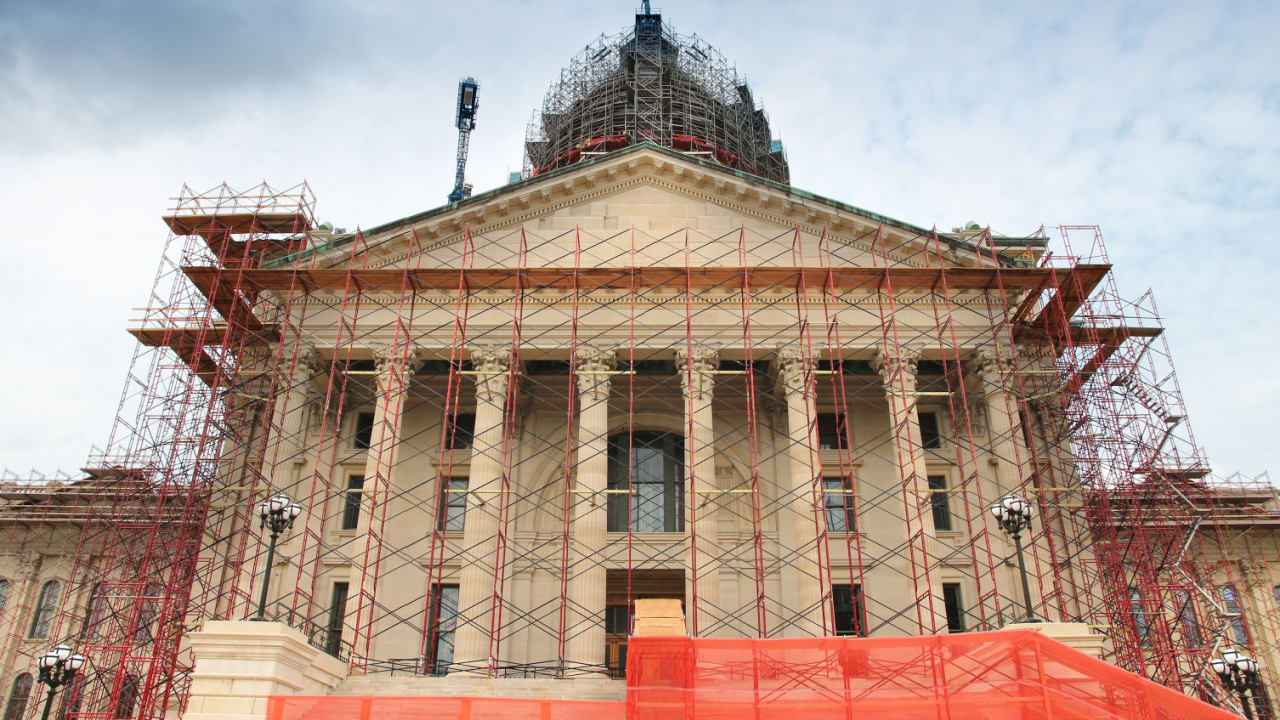
Comparing Contracts: A Review of the AIA 201 and ConsensusDocs - Part II
Part II of this three-part series compares and analyzes important contract sections in the AIA 201 (2007 and 2017 versions) and ConsensusDocs (2014 and 2017 versions), including Schedule/Time, Consequential Damages/LDs, Claims and Disputes/ADR. Part I covered Financial Assurances, Design Risk, Project Management and Contract Administration. Part III will cover Insurance and Indemnification and Payment.
Schedule/Time
Relevant Sections:
- 2007 & 2017 A201: Section 3.10.1
- 2014 & 2017 ConsensusDocs: Section 6.2
AIA:
- Section 3.10.1 of the 2007 A201 requires that the Contractor promptly after being awarded the Contract, prepare and submit a construction schedule providing for Work to be completed within the time limits required in the Contract Documents.
- This schedule shall be revised at appropriate intervals.
- The 2017 edition breaks down the schedule to contain date of commencement, interim milestone dates, date of substantial completion, apportionment of Work by trade or building system, and the time required for completion of each portion of the Work.
- Under section 3.10.2 of the 2007 and 2017 versions, if the Contractor fails to provide a submittal schedule, the Contractor is not entitled to any additional compensation or a time extension based on the Owner’s or the Architect’s slow processing of submittals, regardless of how long they take.
ConsensusDocs 200:
- The 2017 Contract replaces the term Contract Time and instead requires a “Schedule of the Work…formatted in detailed precedence-style critical path method that (a) provides a graphic representation of all activities and events, including float values that will affect the critical path of the Work and (b) identifies dates that are critical to ensure timely and orderly completion of the Work.”
- The Constructor must submit an initial schedule to the Owner only before, “first application for payment” and thereafter on a monthly basis. (Section 6.2.1).
- The Owner is allowed to change the sequences provided in the schedule as long as it does not “unreasonably interfere with the Work.” (Section 6.2.2).
Consequential Damages
Relevant Sections:
- 2007 A201 Section 15.1.6 & 2017 A201 15.1.7
- 2014 & 2017 ConsensusDocs 200: Sections 6.5 & 6.6
AIA:
- Both the 2007 and 2017 A201 Documents contain a mutual waiver of consequential damages, limiting the Owner’s and Contractor’s exposure to direct damages. Note, however, that if the Owner inserts a liquidated damages provision, however, it will have the ability to recover some agreed to amount (the per day liquidated damages amount) of what is otherwise being waived by this provision.
ConsensusDocs 200:
- ConsensusDocs 200 provides a limited mutual waiver of consequential damages.
- Section 6.6 provides that the Owner and Constructor agree to waive the more volatile of consequential damages arising out of the agreement as a default provision. If no items are listed, consequential damages not covered by insurance are waived.
- ConsensusDocs gives the Owner and Constructor an express opportunity to provide for liquidated damages instead of other damages that may be incurred because of a delay. Because this provision allows for the election of liquidated damages, it must be read in connection with the waiver of consequential damages found in section 6.6. A contract that allows the Owner to recover liquidated damages but otherwise prohibits the parties from collecting consequential damages, is not truly mutual.
- Is this good? Constructors should be cautious in electing to provide any liquidated damages in this section. Liquidated damages are intended to compensate the Owner and substitute for actual delay damages and/or lost revenues, Work for a mutual waiver of consequential damages and no liquidated damages. Constructors also should not agree to liquidated damages using a final completion deadline as opposed to substantial completion, as the trigger.
- On the other hand, of the Owner insists on either liquidated damages or maintaining the right to recover consequentials, it may be prudent for general contractors and construction managers to choose and a waiver of consequentials, with a cap on the liquidated damages. In doing this, the Constructor can at least measure its exposure.
Claims ProcesS
- Most Contracts contain a claims process and, in such instances, the claims process must be followed, or claims potentially may be waived.
- “A Contractor seeking to recover payment in excess of the Contract price must follow the procedures set out in the Contract.” Sutton Corp. v. MDC, 423 Mass. 200, 207 (1996); Chiappisi, et al. v. Granger Construction Co., Inc., et al, 352 Mass. 174 (1967).
AIA:
- 2007 A201 section 1.1.8 states that “[t]he Initial Decision Maker is the person identified in the Agreement to render initial decisions on claims in accordance with section 15.2 and certify termination of the Agreement under section 14.2.2.” The 2017 edition clarifies that the Initial Decision Maker may not show partiality to the Owner or Contractor. It also clarifies that he or she will not be liable for the results of interpretations and decisions rendered in good faith.
- 2007 A201 section 15.1.3 and 2017 A201 section 15.1.4.1 require work under protest. They also require the Contractor to preserve its rights in the event of a denial of its claim.
- 2007 A201 section 15.1.2 and 2017 A201 section 15.1.3.1 require that claims by parties must be initiated within 21 days after the occurrence of the event giving rise to such claim or within 21 days after the claimant first recognizes a condition giving rise to the claim, whichever is later.
- The Architect is the “default” Initial Decision Maker in both the 2007 and 2017 editions. (A201 section 15.2.1).
ConsensusDocs 200:
Pursuant to sections 8.1.1, 8.2.2 and 8.3.4, the following occurs during the claims process:
- Change Orders can be directed by the Owner or requested by the Contractor.
- In instances where the Owner simply rejects the claim altogether, the Work proceeds as an interim work directive without prejudice to the Owner’s right to reimbursement in the event that the Work is later determined to be within the scope of the base Contract.
- If the parties cannot agree upon the Change Order price, an Owner may order an Interim Directive. Although the 2014 ConsensusDocs require the Owner to pay the Constructor 50 percent of its estimated costs to perform such work, the 2017 edition requires the Owner to pay the Constructor 50 percent of its actual (incurred or committed) costs. In both instances, the Constructor shall submit its application for payment within 30 days of the issuance of the Interim Directive.
- Cost of the Work under sections 8.3.4 and 8.3.4.19 now is determined net of savings from the change. Constructor’s overhead and profit shall be added to any net increase in the cost of the Work.
Dispute Resolution
Relevant Sections:
- 2007 & 2017 A201: Section 15.4.1
- 2014 & 2017 ConsensusDocs 200: Sections 12.1 – 12.7
AIA:
- 2007 and 2017 A201 sections 15.4.1 contain default provisions requiring litigation. Arbitration must be selected as part of the Contract negotiation process if it is going to be required.
- 15.3.1 requires mediation before binding dispute resolution. The Owner and Contractor may choose arbitration or litigation.
- Although the 2007 version does not specify locale, the 2017 version requires resolution where the Project is located, unless otherwise agreed.
ConsensusDocs 200:
- The ConsensusDocs process is very different from that of the AIA documents.
- As with the A201, the Constructor must continue to work while the dispute is being resolved. (Section 12.1). However, pursuant to section 8.2.2, where the dispute involves whether certain work constitutes extra work or the value of extra work, the Owner and Constructor must split the estimated cost of work until a resolution is achieved. This sharing of cost arrangement does not prejudice either’s right to reimbursement if it is determined that the disputed work was within the scope of the Work, the Owner will be reimbursed. If it is determined that the disputed work is not within the scope of the Work, the Contractor receives the remaining fifty percent. (Compare to AIA A201 section 7, which requires the Contractor to proceed with the work at the Contractor’s sole expense).
- Pursuant to section 12.2, party representatives with the authority to resolve matters must work to resolve matters within 5 business days. If not resolved within 15 days of first discussion, then matters proceed to dispute resolution.
- Section 12.3 requires “mitigation”-a non-binding review either with a dispute review board or a project neutral.
- If mitigation is unsuccessful, mediation must follow.
- If mediation is unsuccessful, the parties will either arbitrate or litigate, depending on which choice they selected as part of negotiating the Contract. If nothing is selected, litigation is the default and not arbitration.
- Both the 2014 and 2017 ConsensusDocs require the non-prevailing Party to pay costs and reasonable attorneys’ fees as determined by the adjudicator of the dispute.
Part I covered Financial Assurances, Design Risk, Project Management and Contract Administration. Part III will cover Insurance and Indemnification and Payment.
Related stories








